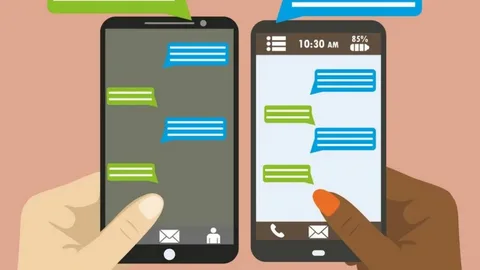
The advent of online chat platforms has fundamentally altered the way we communicate, giving rise to a unique digital language that evolves at a rapid pace. This article explores the profound influence of online chat on language evolution and the emergence of contemporary slang. From abbreviations and acronyms to the creative reimagining of words, the digital sphere has become a dynamic space where language undergoes constant transformation.
Abbreviations and Acronyms: Condensing Communication
Online chat is characterized by its brevity and immediacy, leading to the widespread use of abbreviations and acronyms. Phrases like “LOL” (Laugh Out Loud), “BRB” (Be Right Back), and “TTYL” (Talk To You Later) have seamlessly integrated into both online and offline communication. These shorthand expressions not only save time but also contribute to the informal and conversational tone of digital conversations.
Creative Wordplay and Linguistic Playfulness
Online chat fosters a sense of linguistic playfulness, encouraging users to engage in creative wordplay. From intentional misspellings to playful rearrangements of letters, online users have developed a unique set of language rules that differ from traditional grammar norms. This linguistic freedom allows for a more expressive and dynamic form of communication, where users actively contribute to the evolution of the language they use.
Emojis and Visual Language: A Universal Code
The integration of emojis into online free chat now represents a shift towards a more visual and universal form of language. Emojis serve as a non-verbal layer of expression, transcending linguistic and cultural barriers. Users can convey emotions, actions, and ideas through a vast array of symbols, contributing to a visual language that adds depth and nuance to digital communication.
Influence on Offline Communication: Blurring the Lines
The influence of online chat is not confined to the digital realm; it has permeated offline communication as well. Slang terms, abbreviations, and expressions popularized online have found their way into everyday conversations. This blurring of the lines between online and offline language underscores the pervasive impact of digital communication on language evolution.
The Role of Social Media: Amplifying Linguistic Trends
Social media platforms play a pivotal role in amplifying linguistic trends that originate in online chat. Hashtags, memes, and viral phrases quickly gain traction and become part of mainstream language. The immediacy and interconnectedness of social media contribute to the rapid dissemination of linguistic innovations, shaping the way people express themselves both online and offline.
Cultural Signifiers and Subcultures
Online chat has become a fertile ground for the creation and propagation of subcultures and their associated linguistic markers. From fandoms to internet communities, distinct linguistic signifiers emerge, creating a sense of identity and belonging among like-minded individuals. Slang terms specific to certain subcultures may be incomprehensible to outsiders, further emphasizing the role of online chat in shaping niche linguistic communities.
Challenges and Controversies: The Dark Side of Digital Slang
The rapid evolution of online chat language and slang brings challenges and controversies. Misuse of language, offensive terms, and the potential for miscommunication are inherent risks. The informal nature of digital communication can sometimes lead to misunderstandings or unintended consequences, prompting discussions about the responsible use of language in the online sphere.
Conclusion:
In the dynamic landscape of online chat, language is not static but a living entity that evolves and adapts to the needs and preferences of its users. The influence of online chat on language evolution and the proliferation of slang is undeniable, shaping the way we communicate in both digital and offline spaces. From abbreviations to visual expressions, the language born in online chat reflects the creativity, diversity, and constant flux inherent in the digital realm. As online communication continues to evolve, so too will the language that defines it, ushering in new linguistic trends, expressions, and forms of communication.






